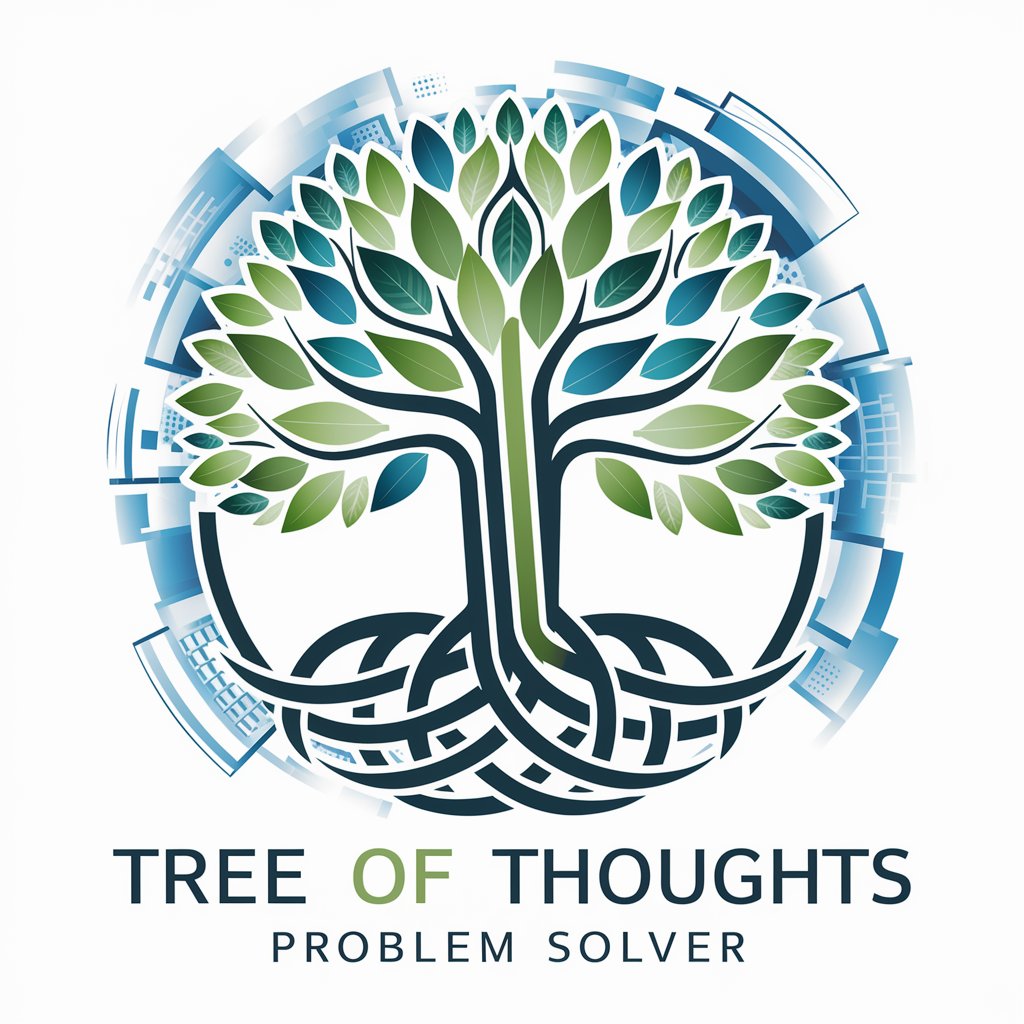
Logical Thinking: MECE and Logic Tree - Structured Thinking Tool

Welcome to structured problem-solving with logic and clarity.
Streamlining Complexity with AI-Powered Logic
Describe the main theme of your project and break it down into level 1 classifications.
Identify the key areas of consideration for solving a problem and organize them using a logic tree.
Explain how to ensure that classifications are mutually exclusive and collectively exhaustive (MECE).
Outline the steps to create a logic tree for a given business strategy.
Get Embed Code
Introduction to Logical Thinking: MECE and Logic Tree
Logical Thinking: MECE and Logic Tree are methodologies designed to enhance problem-solving and decision-making skills by structuring thoughts and analyses in a clear, organized manner. MECE, which stands for Mutually Exclusive and Collectively Exhaustive, is a principle that guides the segmentation of information into non-overlapping categories that together cover all possible options. The Logic Tree, also known as a decision tree, further extends this principle by breaking down a central question or problem into several levels of related issues or choices, following a hierarchical structure. This approach is particularly useful in dissecting complex problems into manageable parts, allowing for a thorough examination of potential solutions and outcomes. For example, in strategic business planning, a Logic Tree could be used to explore different growth strategies, starting with high-level options such as market penetration or diversification, and drilling down to more specific tactics like partnerships or product development. Powered by ChatGPT-4o。

Main Functions of Logical Thinking: MECE and Logic Tree
Problem Structuring
Example
Identifying the root causes of a decline in company profits
Scenario
A Logic Tree can be used to break down the problem into categories such as sales volume, pricing strategies, cost of goods sold, and operational expenses. Each category can then be explored in depth to pinpoint specific issues contributing to the profit decline.
Decision Making
Example
Choosing a new market for expansion
Scenario
MECE can help ensure that all potential markets are considered without overlap, while a Logic Tree can assess each market based on criteria such as market size, competition, and entry barriers, leading to a well-informed decision.
Strategic Planning
Example
Developing a new product launch strategy
Scenario
Using a Logic Tree to outline steps such as market analysis, product development, marketing strategies, and distribution channels. Each branch of the tree could detail specific tasks and decisions needed to move forward.
Process Improvement
Example
Optimizing a manufacturing process
Scenario
A Logic Tree can dissect the manufacturing process into stages such as material sourcing, production, quality control, and distribution. MECE principles ensure each stage is exclusively examined for improvement opportunities.
Ideal Users of Logical Thinking: MECE and Logic Tree Services
Business Analysts and Consultants
Professionals who regularly deal with complex problems and strategic planning would benefit from using MECE and Logic Trees to structure their analyses and recommendations clearly.
Project Managers
Those responsible for planning, executing, and finalizing projects within deadlines and budgets can use these tools for breaking down tasks and identifying potential risks or bottlenecks.
Entrepreneurs and Start-up Owners
Individuals in the process of starting or running their own business can apply MECE and Logic Tree methodologies for business planning, market analysis, and decision-making processes.
Educators and Trainers
Professionals who teach problem-solving, critical thinking, or business strategy can incorporate these tools into their curriculum to enhance students' analytical and decision-making skills.

Guidelines for Using Logical Thinking: MECE and Logic Tree
Begin with a Trial
Start by visiting yeschat.ai for a hassle-free trial without the need for logging in or subscribing to ChatGPT Plus.
Understand MECE Principle
Grasp the concept of MECE (Mutually Exclusive and Collectively Exhaustive) to ensure your analysis covers all possible scenarios without overlapping.
Develop a Logic Tree
Create a Logic Tree to structure your problem or decision-making process, breaking it down into various levels of detail.
Apply to Use Cases
Use this tool in diverse scenarios like strategic planning, problem-solving, or decision-making to bring clarity and structure.
Refine and Iterate
Continuously refine your Logic Tree for accuracy and completeness, ensuring it aligns with the MECE principle.
Try other advanced and practical GPTs
English ↔️ Mandarin Professional Translator
AI-Powered, Culturally Fluent Translations

The Principal Engineer
Streamline Your Software Projects with AI

Trendy Outfit Assistant Plus
AI-powered Personal Stylist and Makeup Advisor

Gaming on the Spectrum
Empowering Gamers on the Spectrum

Builder Considerations
Empowering your ideas with AI insight

HW Creative Design Mate
Designing tomorrow's products today.

The Renaissance Period
Reviving the Renaissance through AI

SATANisMe [PERIOD] NO DOUBDT! LOVE ATOMATICALLY BE
Unleashing Creativity with AI Power
![SATANisMe [PERIOD] NO DOUBDT! LOVE ATOMATICALLY BE](https://files.oaiusercontent.com/file-clZp431jjLaNSSYdtegcjQcC?se=2124-01-09T15%3A10%3A40Z&sp=r&sv=2021-08-06&sr=b&rscc=max-age%3D1209600%2C%20immutable&rscd=attachment%3B%20filename%3DPrevent_20drugs.jpg&sig=QjmXS6rw8ZiIORJ2z%2Bcv%2B253dW5%2BIcbJzvR4Uu7tkas%3D)
Period and Menopause Guide
Empowering Women's Health with AI

GPT AI Dad Jokes
Humor powered by AI, culture infused

Art Period Describer
AI-powered insight into art history

Heian-period style Art maker|AI Otaku
Reviving Heian art with AI innovation

FAQs on Logical Thinking: MECE and Logic Tree
What is the MECE principle?
MECE stands for Mutually Exclusive and Collectively Exhaustive. It's a method of grouping information into segments that do not overlap and cover all possible options.
How does a Logic Tree help in problem-solving?
A Logic Tree helps by breaking down a complex problem into smaller, manageable parts, allowing for a structured and thorough analysis.
Can the MECE and Logic Tree approach be applied in business strategy?
Absolutely. It's particularly useful for strategic planning, ensuring that all aspects of the strategy are considered without overlap.
Is the Logic Tree approach suitable for personal decision-making?
Yes, it can be used for personal decisions like career planning or major purchases by structuring the decision criteria.
What's a common mistake to avoid when using MECE?
A common mistake is creating categories that are not truly mutually exclusive, leading to overlaps and gaps in analysis.





